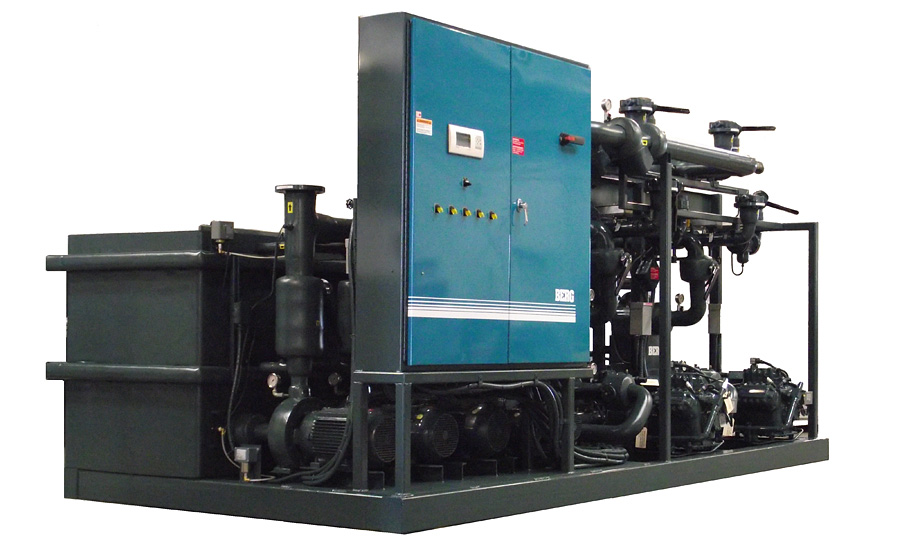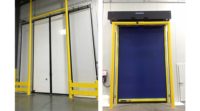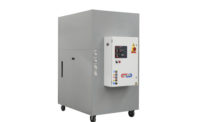An innovative Hybrid Chiller combines a chiller and an air-blast fluid cooler to provide extraordinary water and energy savings for a major plastics facility in Canada.
System requirement
The customer’s initial requirement called for most of the load to be chilled water type cooling, as the temperature requirement was stated to be within the range of 7-25°C. After a thorough review and understanding of the customer’s process, it was suggested that most of the load could successfully operate at higher supply temperatures. This simple suggestion resulted in the majority of the load being satisfied with ambient produced free coolingrather than high horsepower mechanical cooling. The result was now only 22% of the load would require a chiller supplying mechanical cooling at 7°C while the balance could be satisfied with cooling at 30-35°C.
The challenge
The most energy efficient solution would be to utilize ambient-based cooling equipment and the most environmentally friendly solution would be a Hybrid Chiller incorporating a fluid cooler that consumes no water (there is no need to treat the inlet air with a misting system to achieve temperature). Also, there would be no evaporative cooling requiring water makeup as required by an evaporative cooler, no need for introducing water for temperature trimming, nor will the system require the constant attention of chemical treatment. However, such a system would not be able to attain and maintain the lower temperature requirement during the hotter summer months. To meet the 7°C requirement, a chiller would have to be used in conjunction with the fluid cooler.
The solution
Berg Chilling Systems, Inc., Canada, designed a Hybrid Chiller system that integrates both the air-blastcooler and a chiller. The system is equipped with advanced system manager controls that automatically allow for a seamless transfer between the air-blastcooler and chiller. The air-blastcooler will satisfy all of the process demands for most of the year, even taking advantage of a cooler spring and fall nights. The chiller takes over to supply the portion of the process that requires 7°C when ambient temperature rises above 2°C.
Savings and payback
Applying the Berg Hybrid Chiller system, the customer stands to save approximately $100,000 in annual operational costs due to energy, municipal water usage and chemical treatment savings.



